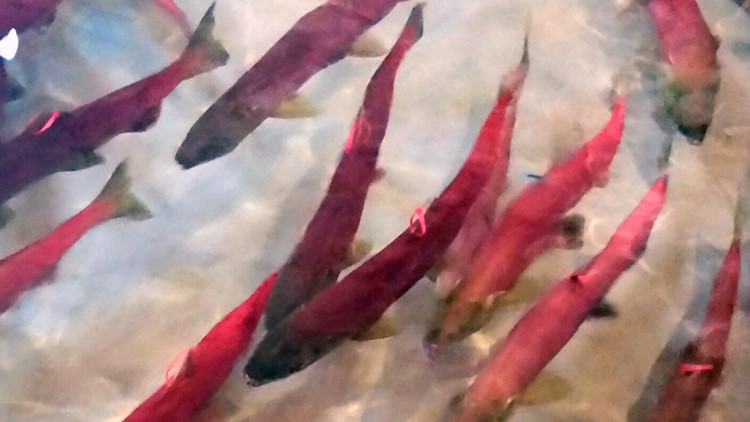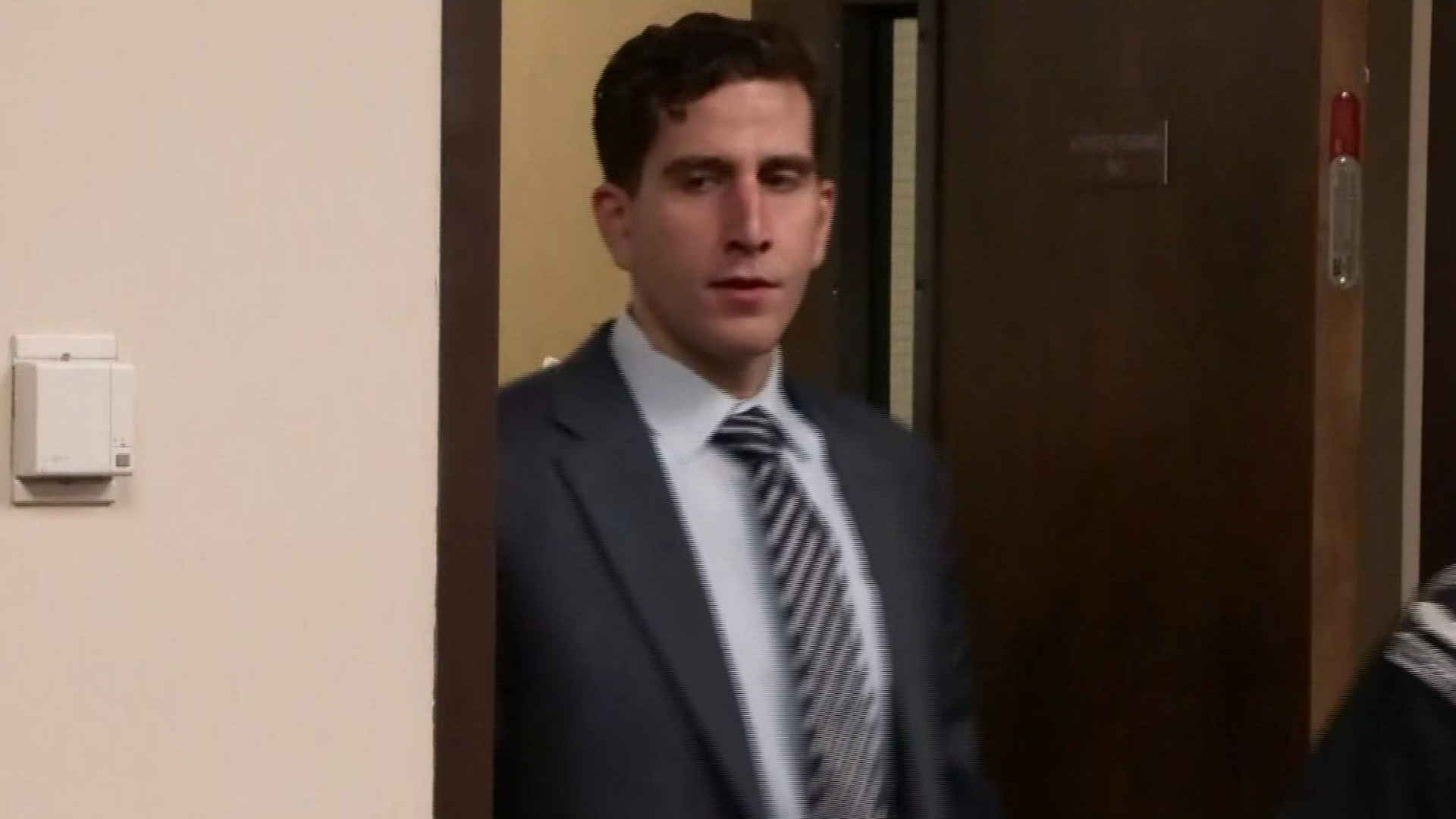BOISE, Idaho — Fisheries managers are optimistic a program to save imperiled Snake River sockeye salmon is heading in the right direction despite few of the ocean-going fish making it back to central Idaho this year.
Of the 730,000 young sockeye released in Idaho 2017, only 17 survived the 900-mile (1,400-kilometer) journey to the Pacific Ocean and then back again to arrive as adults in the Sawtooth Basin near Stanley.
But John Powell of the Idaho Department of Fish and Game said late last week that fish raised to adults in hatcheries will keep the population going. Biologists also released 610 adults into central Idaho lakes this fall to spawn naturally.
"Years like this are where we can see the benefit of having the captive brood stock for maintaining the genetic diversity of the founding population," Powell said.
He also said biologists have solved problems that caused most of the young hatchery sockeye to die shortly after being released into the wild in Redfish Lake Creek in 2017.
Of the 17 fish that returned this year, genetic tests indicated three had ancestors in Pettit Lake and they were released there to spawn naturally. The rest, which genetics showed came from Redfish Lake, were taken to the Eagle Fish Hatchery in southwestern Idaho to be artificially spawned and contribute to future brood stock and young fish released into the wild.
An estimated 150,000 sockeye at one time returned annually to central Idaho, and Redfish Lake was named for the abundant red-colored salmon that spawned there. Federal officials say the run declined starting in the early 1900s due to overfishing, irrigation diversions, dams and poisoning, eventually teetering on the brink of extinction in the early 1990s. The fish were listed as endangered under the Endangered Species Act in 1991.
Only 16 adults returned over the next eight years. But state and federal officials used those fish to start an elaborate hatchery program that tracks genetics.
Young fish are raised to adults at the Idaho Department of Fish and Game's Eagle Fish Hatchery and at another hatchery at NOAA Fisheries' Manchester Research Station in Port Orchard, Washington.
The dual hatchery system is intended as a backup should a catastrophe occur at one of the hatcheries.
That program had been working well with a record 1,516 adults returning to the Sawtooth Basin in 2014. Fisheries managers appeared to be approaching their ultimate goal of getting enough adult fish returning from the ocean to create a self-sustaining, naturally reproducing population of wild fish.
But then came two disasters.
In 2015, about 90% of the adult sockeye salmon returning to the Columbia River Basin died due to high water temperatures. Only 91 adult sockeye made it to Idaho, with many of those trapped in Washington after the magnitude of the unfolding disaster became clear.
A second disaster followed.
Officials started using the new Springfield Fish Hatchery in southeastern Idaho to raise young fish for release in central Idaho. That hatchery is intended to increase the number of young sockeye released into the wild from about 220,000 to more than a million.
For the first time in 2017, all the young fish released came from that hatchery. But only 16% survived the trip to Lower Granite Dam in western Washington. Many of the fish died not long after being released into Redfish Lake Creek.
Biologists determined the young fish died because they couldn't acclimate to the hard water in the creek after being raised in the soft water at the Springfield Fish Hatchery.
So, in spring 2018 and 2019, biologists first let the young fish acclimate at the Sawtooth Fish Hatchery near Stanley that has medium-hard water.
Powell said that when they were released into Redfish Lake Creek later in the spring, survival rates to Lower Granite Dam were about 65%. That's the best ever recorded.
All that bodes well, Powell said, for much larger returns of adult sockeye salmon to the Sawtooth Basin in 2020 and 2021. Sockeye salmon typically spend two years in the ocean.
"Hopefully, this is the low point," Powell said. "As we start having fish from our acclimated releases reach (maturity), we'll see those returns pick up again."



